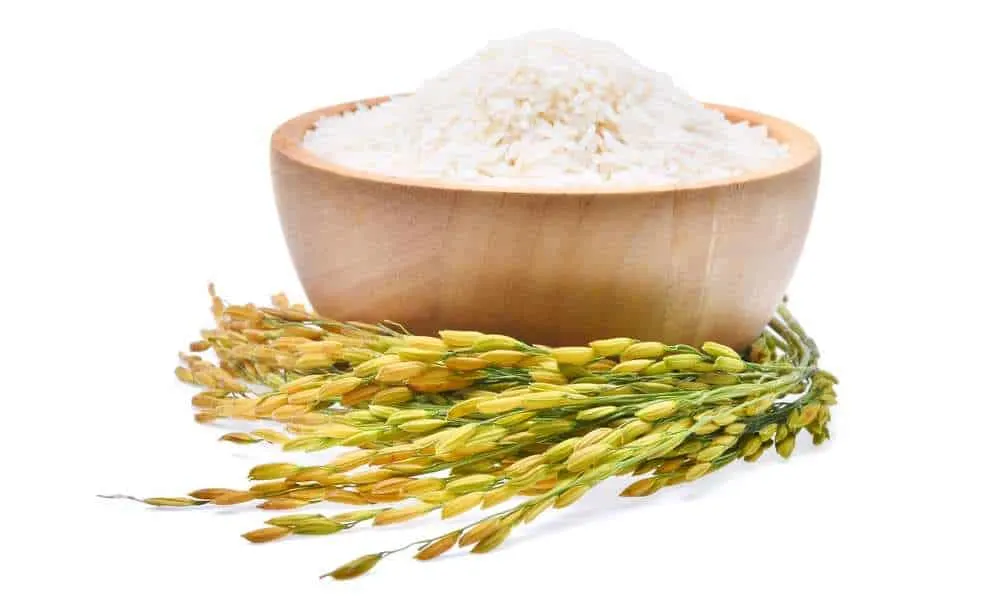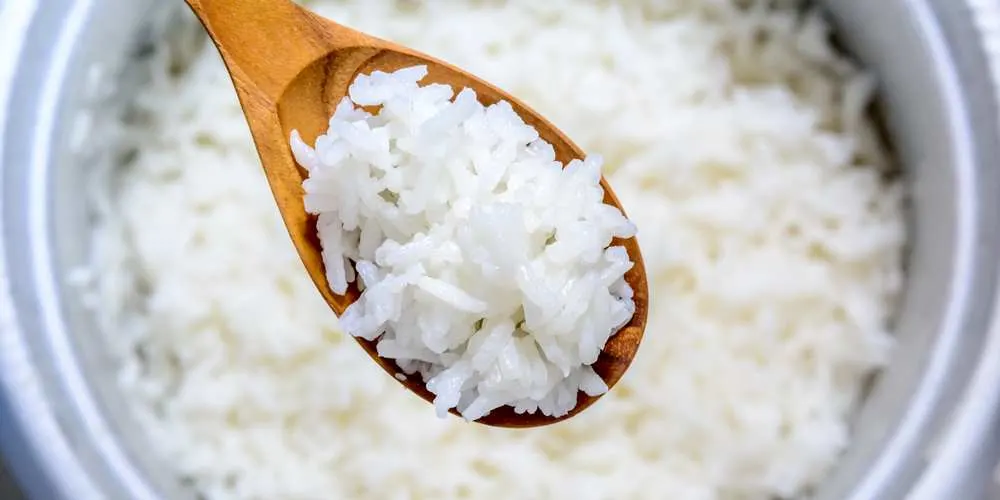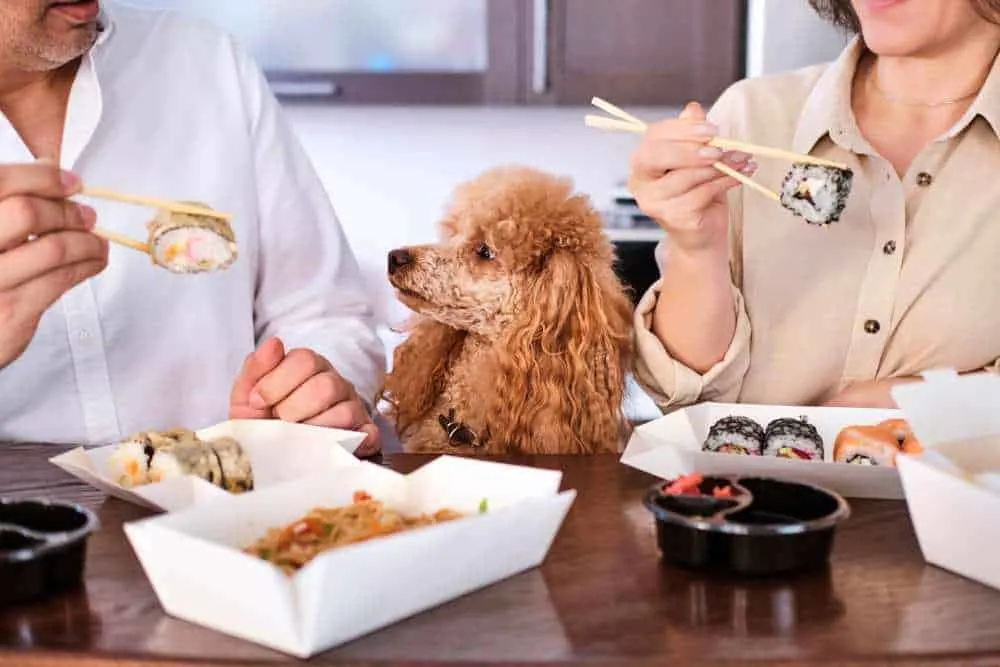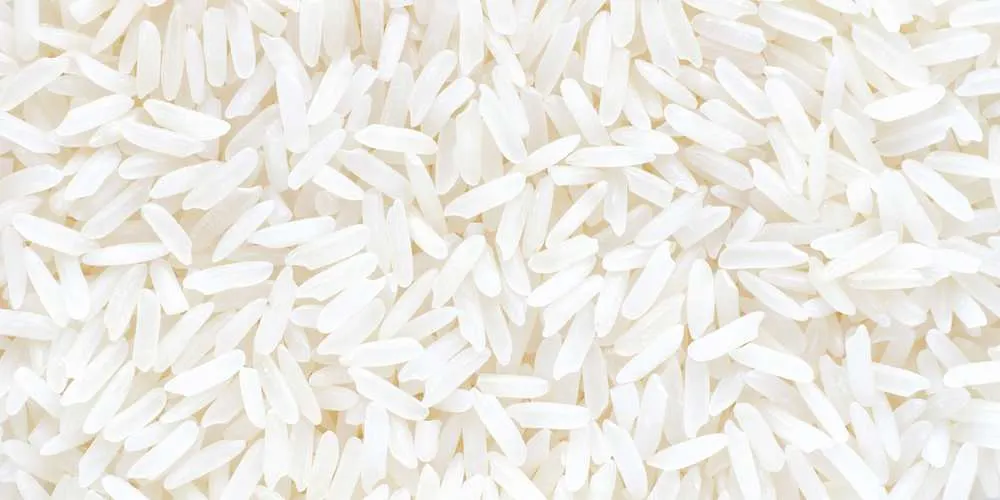Rice is one of the most popular foods all around the world. We all know white rice, well more exactly, any kind of rice is highly nutritional and a great source of macro and micronutrients for our bodies. But can dogs eat white rice as well?
If you take a better look, almost all kinds of dog kibbles contain some rice, so that has to mean that rice is beneficial for our dogs? The quick answer is yes, but still, some puppers do not tolerate a grain-based diet.
Anyhow, we’ve all been trying to feed our pups with well-balanced meals that will provide them overall nutrition since, yes, we all need our dogs to live at least the next 50+ years or so.
Today, I will teach you how to prepare rice so that your dog can maximize the health benefits of this popular grain and thrive on it.

Benefits Of Feeding Dog Rice
Rice is a whole grain and such as that it is very nutritional and a great source of energy for both humans and animals. Rice is rich in carbohydrates, protein, and fiber. The main reason rice is an energy bomb is the number of carbohydrates since we all know that carbs when converted to sugar, provide instant energy.
Also, rice is a great source of vitamin D and iron. Iron helps in the formation of hemoglobin in red blood cells that carry oxygen through the body; on the other hand, Vitamin D helps regulate calcium and phosphorus levels in the body. Also, white rice is low in sodium and fat, which is very important for your dog.
Rice will also improve bowel movement because it boosts the development of useful bacteria in your dog’s body. When feeding your dog with rice, you will also combat diarrhea very successfully.
Rice is also rich in ingredients like:
- Niacin
- Vitamins B1 and B6
- Thiamine
- Magnesium
- Selenium
- Manganese
If your dog is having an immune response to gluten, there is no need to panic since rice is a great choice for them since it delivers important carbohydrates without gluten. Rice helps the brain function and promotes a diverse microbiome that can help boost your dog’s overall immune system.
White rice is more easily chewable and digestible, it cooks faster, it is more cost-effective, and a way better for dogs suffering from an upset stomach or diarrhea than brown rice, for example.
Remember, the calories from rice should make up no more than 10 percent of your dog’s caloric intake. Feed them frequently with a small amount, and you can be sure this will help prevent your dog from gaining extra weight.

Can Rice Be Harmful To Dogs?
White rice has a higher glycemic index than brown rice, so it may cause your dog’s blood sugar levels to rise and fall more than brown rice. You should feed them with white rice more carefully since if you feed them with portions that are not proportional over a longer time, it may cause diabetes type 2 (especially in older dogs).
Domestic dogs are omnivores, so they can digest plant food as well as meat. No matter which breed of dog you have, you can be sure that they evolved a lot from their wolf ancestors. Dogs nowadays require vastly different nutrients since a diet based only on meat will, for sure, lack a lot of vitamins and minerals that are now essential for your doggo.
Dogs are able to digest rice and get nutrition from rice, so there is simply no scientific evidence that rice (and a lot of different types of grains) is harmful to dogs. Of course, some dogs are sensitive to gluten, so they may do better on a grain-free diet; some will thrive better on a diet that contains grains.
What is important thing is to know if your dog is allergic to rice. It is very easy to check if your dog is allergic or not since the symptoms will appear soon after eating. The most common symptoms are:
- Itchy skin
- Hair loss
- Ear infection
If your pup is allergic to white rice or is getting too old (more prone to diabetes), consider feeding him brown rice instead since it is healthier than white rice. Anyhow, the conclusion is that rice is easy on dogs’ digestive system, so not that they can eat rice; they can also greatly benefit from it when it is being added to their diet in smaller amounts and frequently.

How To Prepare Rice For Your Dog
When it comes to cooking rice for your dog, it can’t get any simpler; cook it plainly—no added salt, pepper, or spices. Just water and rice and you are good to go.
I use one cup of rice and four cups of water, and I make sure to wash uncooked rice thoroughly to wash away all the starch I can. Use a pasta sifter for this to prevent the rice from falling through. Run the rice under the cool water and leave it there until the water becomes clear. The only time I do not rinse the excess starch away is when and if my dog has diarrhea since, in that case, he needs as much as starch to help make stool compact once again.
After this, boil it in the pot of water for approximately 20 to 30 minutes or according to the package directions until it’s soft. Why is this important? Well, that is the only way to avoid digestive issues that can be caused by uncooked rice.
How To Incorporate Rice In Your Dog’s Diet
Obviously, your pupper won’t be so excited to eat plain white rice, but the great thing is that white rice is so versatile and easy to combine, so your dog won’t grow bored of the taste that easily. Don’t be afraid to experiment, I recommend you to try adding some of these ingredients and your pup will love it.
Squash And Carrots Mush
Squash and carrots are excellent sources of beta-carotene. Boil carrots and squash and make a mush out of it and if you want to make it more fun for your fur baby, you can freeze them in cubes and serve it as a crunchy side dish as well.
Side note: Always remove seeds from the squash!
Peas
Peas are also a very common ingredient in many dog foods, so why not add them to your puppers homemade meal. They are a great source of vitamin B, potassium, and phosphorus, so it is very beneficial for your dog’s overall health.
Add half a cup of boiled peas in a portion of white rice and serve it to your dog.
Parsley
It may sound weird to add parsley to your dog’s bowl of food; cause honestly, which dog needs herbs in their meal, but the truth is that parsley is great for your doggo’s breath! Also, it is a good source of beta-carotene, calcium, and potassium.
If you noticed that your dog has bad breath, add some parsley to the rice meal and see what happens.
Pineapple
Pineapple and rice are some of the weirdest combos I ever served to my dog, but you know what? He loves it! And why he wouldn’t, when pineapples taste so sweet. That is why you should not serve this combo very often since both ingredients are high in sugar.
Pineapple is rich in calcium and potassium, which are important nutrients for your dog, so when you want to treat your dog from time to time, this combo might be a great idea.
Cottage Cheese
Cottage cheese is a great source of protein and calcium but make sure your dog is not allergic to dairy before serving this combo meal.
Most dogs have a digestive system that is very sensitive to lactose, so an allergic reaction is highly possible. Test his response with a small quantity first.
Liver
The liver is a great source of vitamins B, A, and K, minerals, and iron. All these ingredients are very beneficial to your dog’s health. Make sure you feed with the liver in moderation since too much vitamin A can be toxic to your pooch.
You can buy it fresh or frozen; you can also freeze it once it’s cooked. Mix liver and rice, and do not forget to use the broth obtained from cooking the liver to add some extra flavor.
Low-fat Meat
White rice and meat are a match made in heaven. You can add any meat you know your doggo prefers into his rice meal; just make sure it is low on fat. Meat is a great source of vitamin B and amino acids, which play an important role in supporting your dog’s metabolism.
The safest combo is chicken and rice since this meal is very nutritional and easy to digest (perfect for upset tummy). One important thing you need to remember, when you serve this meal, always serve plenty of water to your dog to avoid constipation.
Never serve white rice more than 2-3 times a week!

Wrap Up
Do not be afraid to include white rice in your dog’s diet. If you are strict and you take good care of the amount you serve to your pooch, you can be sure you are doing the right thing.
White rice will be very beneficial to your dog’s overall health, and it will also help them fight obesity by enhancing their energy levels. It is cost-effective and easy to combine, so making complete, well-balanced meals with it will be a piece of cake.
This is more than enough reasons why you should implement your dog’s diet with white rice. Remember that the key to a well-balanced dog diet is versatility and moderation.
Learn More: What Can Dogs Eat? A Comprehensive List Of Dog-safe Foods


